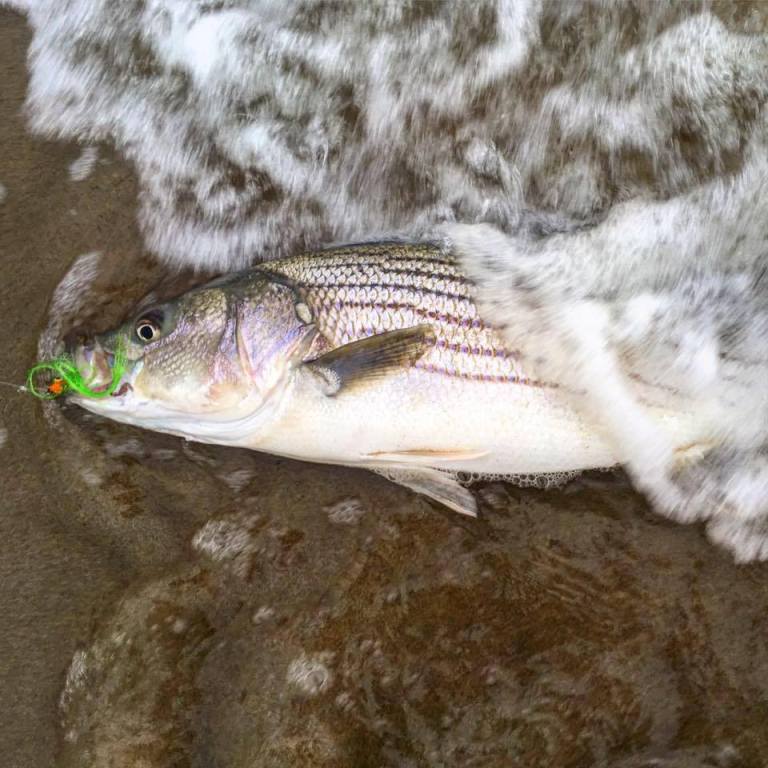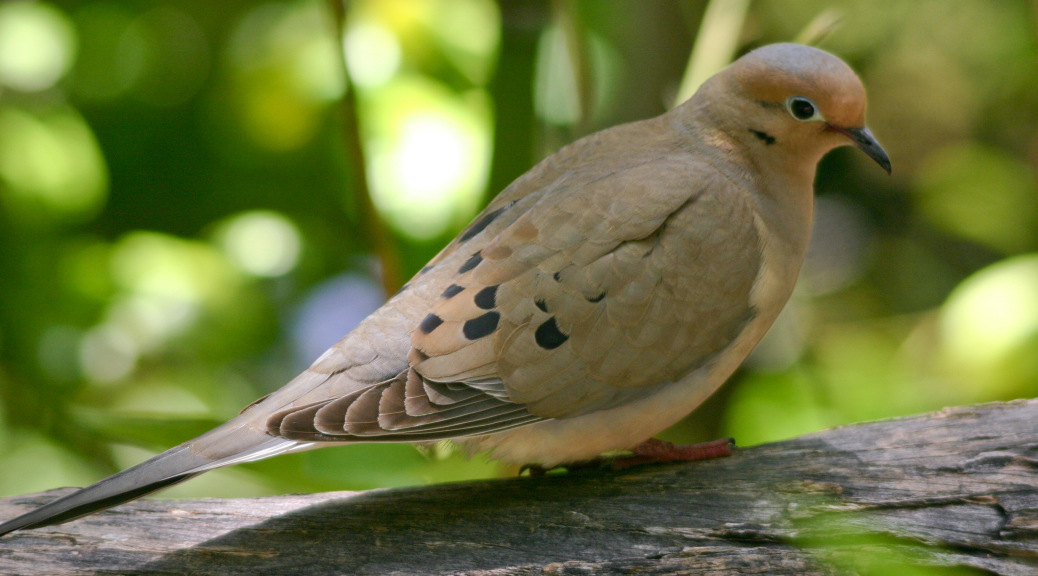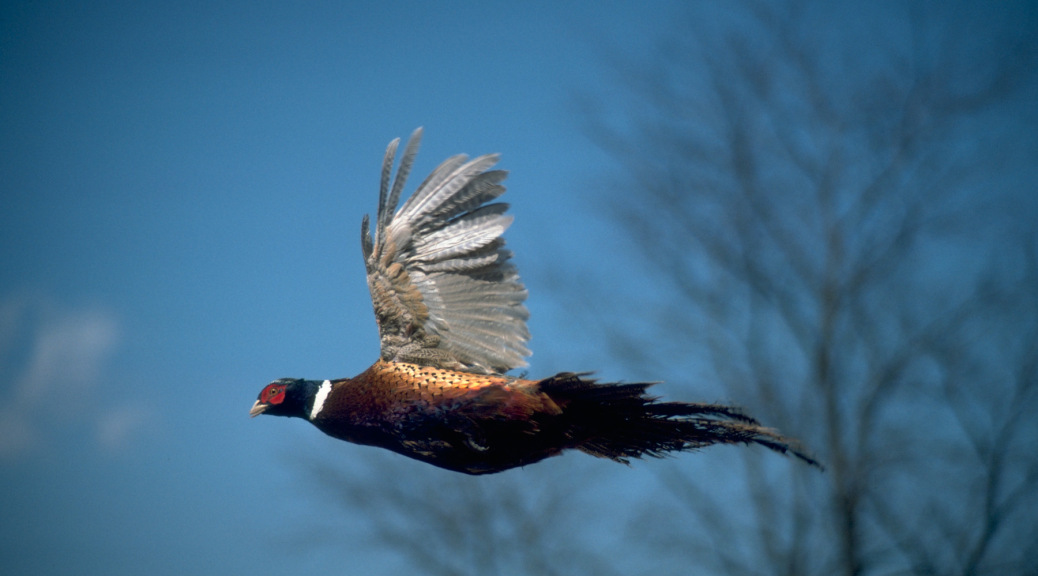Fish Report for 7-27-2017
Fishing for Black Bass after Catching a Limit of Stripers?

by Carrie Wilson
7-27-2017
Website
Question: My buddies and I do a fair amount of striper fishing and seem to always debate this question. Am I allowed to keep fishing after keeping a limit of stripers as long as I am fishing for largemouth/smallmouth bass instead? The techniques are similar, so I’m wondering if we could be cited. (Brett M.)
Answer: After catching your limit of striped bass, you can continue fishing for largemouth and smallmouth bass. However, once you have made this switch, you must make sure to immediately release any accidentally caught stripers.
Collecting a road-killed opossum?
Question: I saw an opossum dead on the side of the road yesterday, not playing possum (it was actually dead). I wanted to take it home to keep the bones but I left it there untouched because I didn’t know what the law on collecting was. If I find an animal like that again, can I take it home and process it? If I can’t, is there someone I can talk to who might allow me to keep the bones after the state processes it? (Rachael)
Answer: Road-killed wildlife may not be possessed. “The accidental taking of a bird, mammal, reptile, or amphibian by collision with a motor vehicle while the vehicle is being operated on a road or highway is not a violation of this code” (Fish and Game Commission, section 2000.5). This means it is not illegal to accidentally kill the animal, however, the Fish and Game Code does not authorize possession of wildlife accidentally killed in vehicle collisions. Opossum are classified as non-game mammals that may be hunted with a hunting license (California Code of Regulations Title 14, section 472(a)). The only way for you to legally possess them would be to hunt them or to obtain a scientific collecting permit, if your collection purposes are for scientific research purposes.
Illegal animal imports?
Question: A while back I saw the reply in your column regarding the legality of buying/selling python snake skin. I see kangaroo on the prohibited list. Does this include all species? As I understand it, the Australian government allows the cull of Marcropus giganteus due to gross overpopulation. (Steve B.)
Answer: Yes. California Penal Code section 653o includes all species of kangaroo and provides that it “is unlawful to import into this state for commercial purposes, to possess with intent to sell, or to sell within the state, the dead body, or any part or product thereof, of a polar bear, leopard, ocelot, tiger, cheetah, jaguar, sable antelope, wolf (Canis lupus), zebra, whale, cobra, python, sea turtle, colobus monkey, kangaroo, vicuna, sea otter, free-roaming feral horse, dolphin or porpoise (Delphinidae), Spanish lynx, or elephant.”
Where can to use two rods in San Francisco Bay?
Question: I’m a little confused about the rules on using two rods when fishing San Francisco Bay. The rules state, “While fishing from the shore in San Francisco and San Pablo bays between the Golden Gate Bridge and the west Carquinez Bridge, you may only use one line with no more than three hooks; you may also use an unlimited number of crab traps. Species-specific gear restrictions (such as for rockfish, lingcod and salmon) do apply when fishing from the shore.”
So, if I’m fishing from Alameda, can I use two rods? The rule says only from between Golden Gate to Carquinez Bridge. Alameda is to the east of the Golden Gate but I’m fishing from the shore in San Francisco Bay. Please let me know. (San S., Alameda)
Answer: The answer to your question is no, but you’ve asked an excellent question. There is a section in our regulations (CCR Title 14, section 27.00) that defines the waters of San Francisco Bay. The waters off Alameda are part of San Francisco Bay pursuant to this definition. This section, as recently amended, includes the following definition:
“The Ocean and San Francisco Bay District consists of the Ocean and San Francisco Bay, as described herein. The Ocean is the open seas adjacent to the coast and islands and the waters of open or enclosed bays contiguous to the ocean, including the waters of Elkhorn Slough, west of Elkhorn Road between Castroville and Watsonville. San Francisco Bay is the waters of San Francisco and San Pablo bays plus all their tidal bays, sloughs, estuaries, and tidal portions of their rivers and streams between the Golden Gate Bridge and the west Carquinez Bridge. …”.
In the San Francisco Bay (as defined above), “only one line with not more than three hooks may be used” (CCR Title 14, section 28.65(a)).
Carrie Wilson is a marine environmental scientist with the California Department of Fish and Wildlife. While she cannot personally answer everyone’s questions, she will select a few to answer each week in this column. Please contact her at CalOutdoors@wildlife.ca.gov.
< Previous Report Next Report >
< Previous Report Next Report >
More Reports
California Department of Fish & Wildlife Reports
for Monday, July 24th, 2017
: Fish Trafficking Ring Sentenced Following CDFW Bust
: Special Dove Hunt Opportunities Available for 2017 Season

7-22-2017
California hunters can now apply online for specially managed upland game bird hunting opportunities on private and public lands. Starting with...... Read More

Website Hosting and Design provided by TECK.net